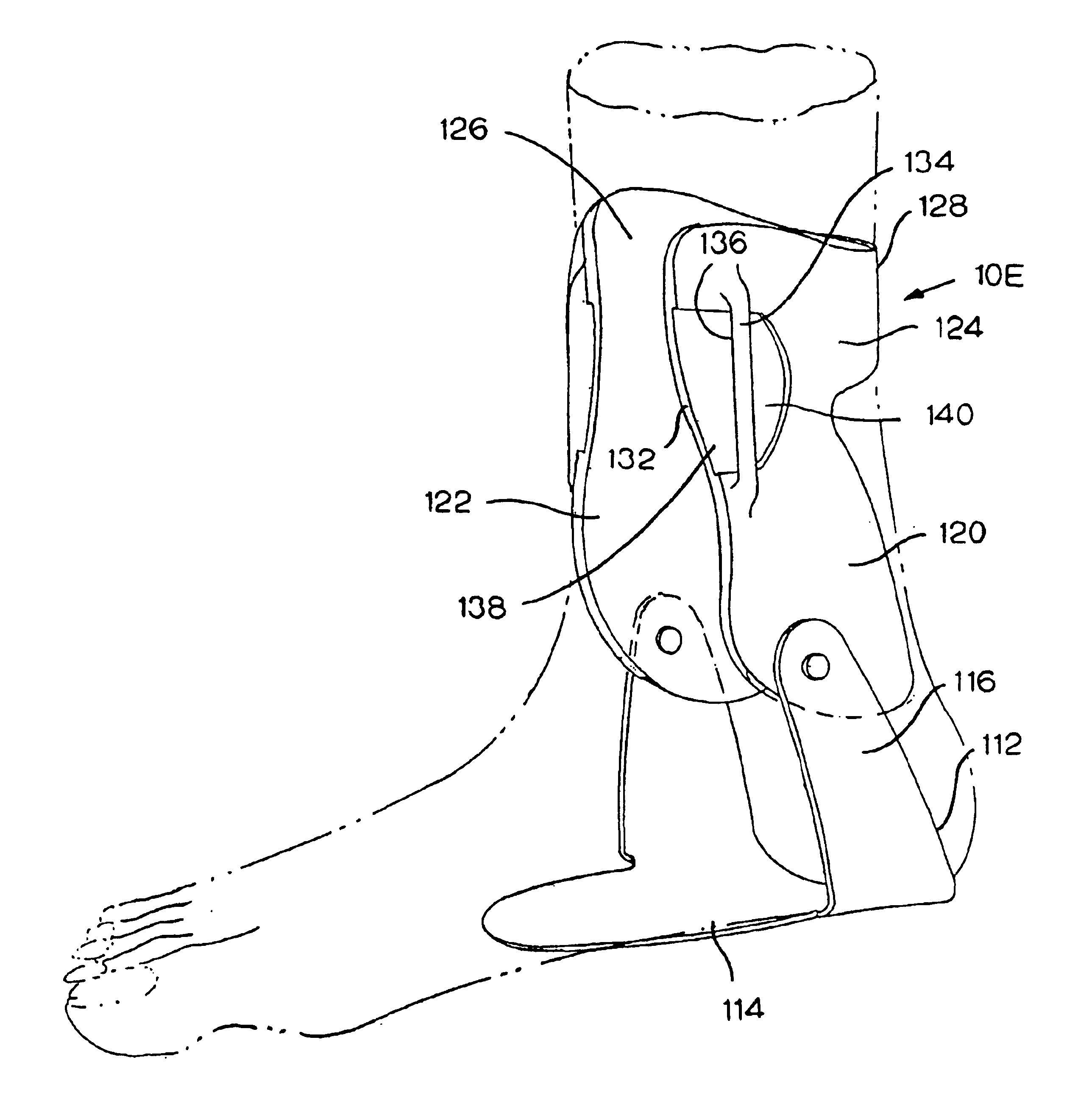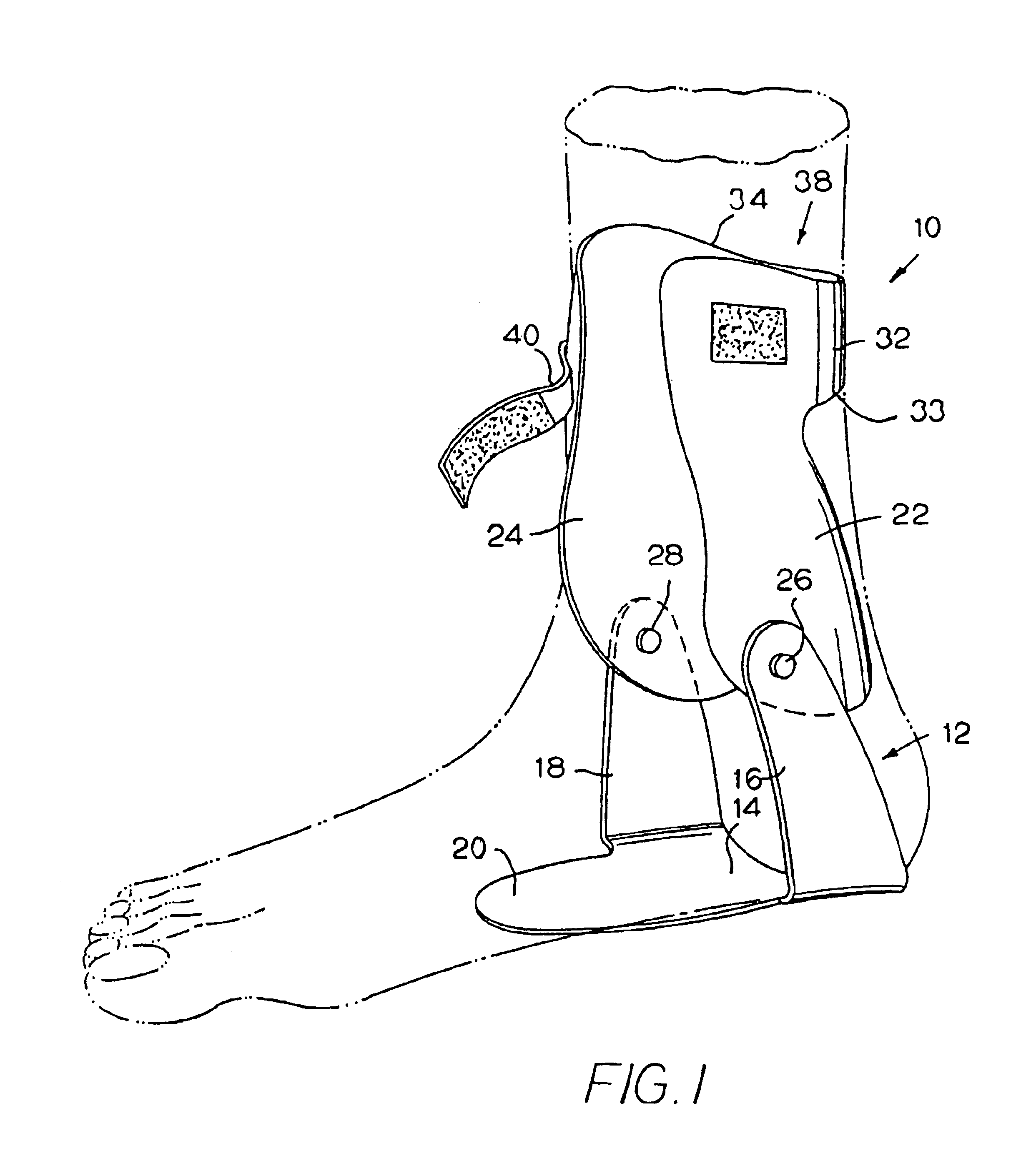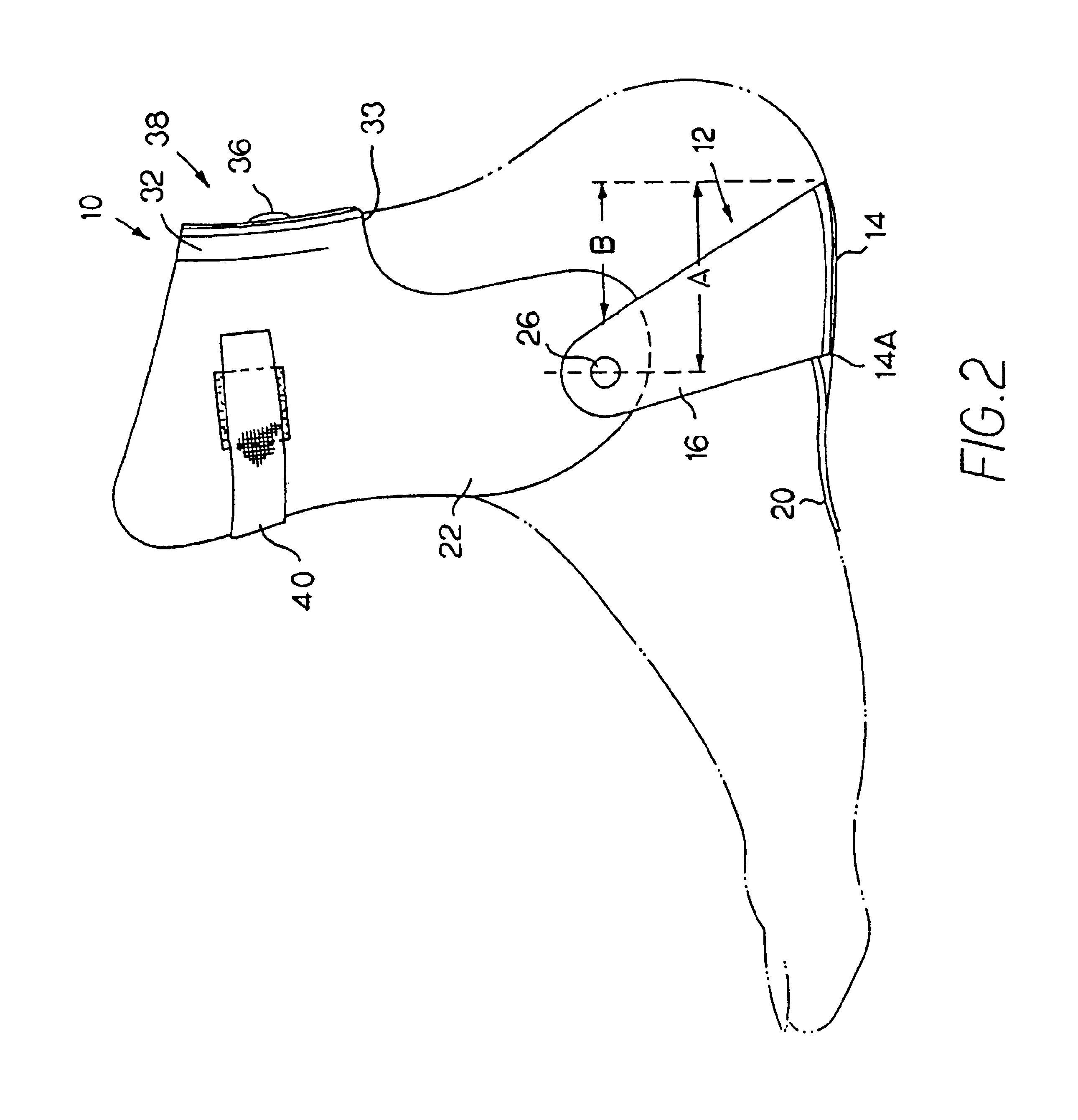Ankle brace with cuff and strap
a technology of ankle braces and cuffs, applied in the field of ankle braces, can solve the problems of sacrificing some structural support, irritation and pain, and less support for the person's ankle, and achieve the effects of improving flexibility, improving stability, and improving stability
- Summary
- Abstract
- Description
- Claims
- Application Information
AI Technical Summary
Benefits of technology
Problems solved by technology
Method used
Image
Examples
Embodiment Construction
FIGS. 1-5 show an ankle brace 10, which is made up of three main pieces. The first piece is the heel stirrup 12, which is substantially U-shaped, and includes a base or bottom portion 14 and left and right upright portions 16, 18. The upright portions 16, 18 project upwardly and forwardly from the rear of the base portion 14, which permits them to wrap around the heel, which provides for the greatest support, while still locating the pivots 26, 28 adjacent to the ankle, to provide the greatest comfort and flexibility. The horizontal distance “A” from the axis of the pivots 26, 28 to the rear of the stirrup 12 preferably is at least one inch. The horizontal distance “B” from the rear edge of the upright portion 16 at the height of the pivot 26 to the rear edge of the base 14 preferably is at least 0.75 inches. This location of the upright portions 16, 18 also prevents the stirrup 12 from interfering with the spreading of the foot. A tongue 20 extends forward from the forward edge 14A...
PUM
 Login to View More
Login to View More Abstract
Description
Claims
Application Information
 Login to View More
Login to View More - R&D
- Intellectual Property
- Life Sciences
- Materials
- Tech Scout
- Unparalleled Data Quality
- Higher Quality Content
- 60% Fewer Hallucinations
Browse by: Latest US Patents, China's latest patents, Technical Efficacy Thesaurus, Application Domain, Technology Topic, Popular Technical Reports.
© 2025 PatSnap. All rights reserved.Legal|Privacy policy|Modern Slavery Act Transparency Statement|Sitemap|About US| Contact US: help@patsnap.com



